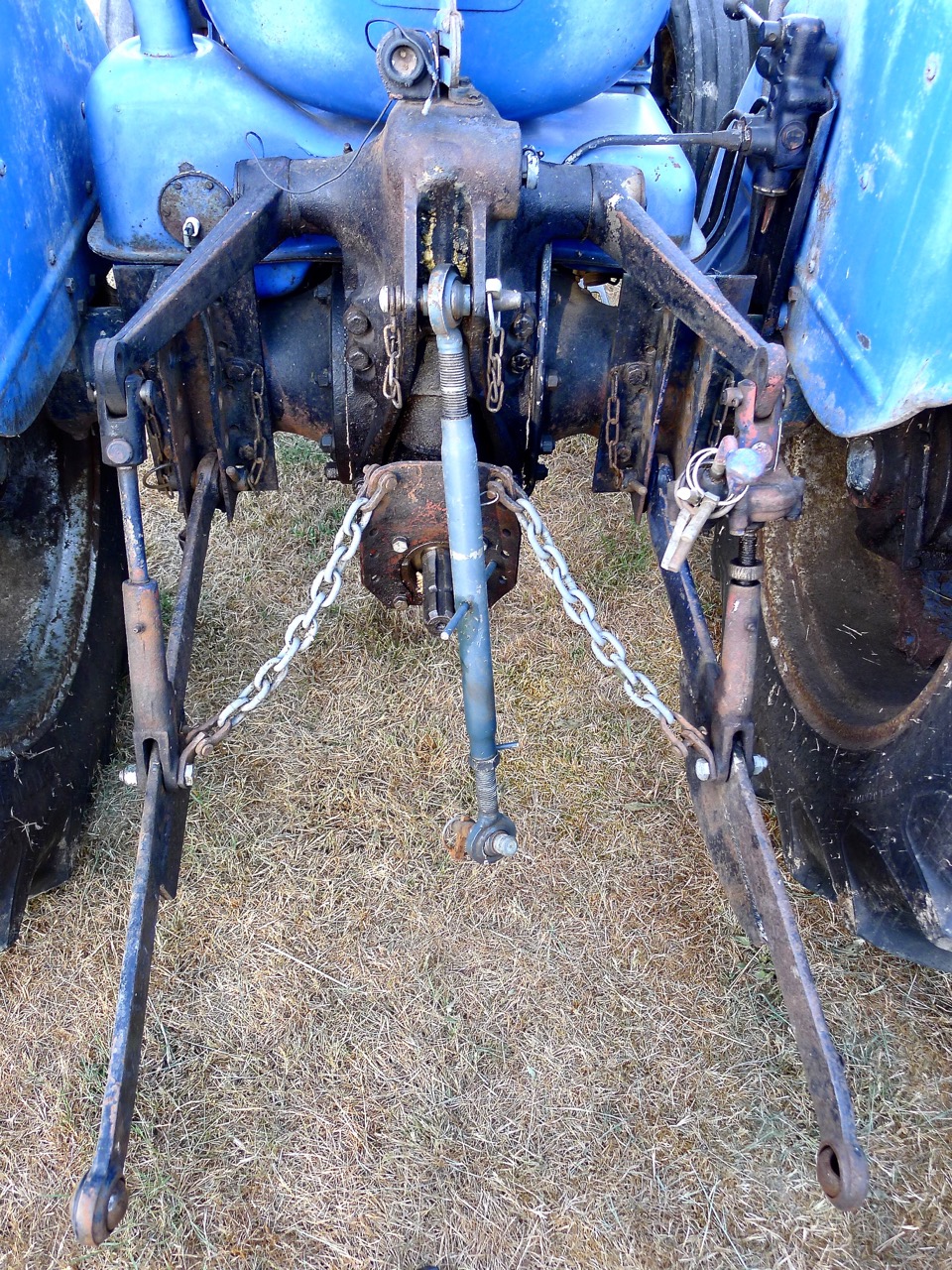Harry Ferguson and the Three-Point Hitch
/The three-point hitch is now standard equipment on almost all tractors, but back in 1926, when patented in Great Britain by an Irish engineer named Harry Ferguson, it revolutionized the way implements were attached to tractors. Ferguson had visualized the many advantages to be gained by creating a rigid connection between a tractor and plow, so he experimented with this new linkage technology. Soon, his “Ferguson System” for attaching specially designed implements started its climb from obscurity to the status of an important milestone in tractor history.
No longer would the old-fashioned drawbar and tongue method be the only choice. Whereas previously a tractor towed a wheeled implement, the new three-point hitch made the tractor and implement function like a single unit. The implement became part of the tractor, did not need wheels, and could be lifted off the ground, when necessary, by means of a hydraulic pump the operator controlled from his seat. This made the equipment highly maneuverable and convenient to use.
This photo shows the three-point hitch on Fred Leenstra’s 1952 Ford 8N, without the top link attached.
Pacific Northwest farmer, tractor collector, and former landscape contractor Fred Leenstra shared his thoughts on why Ferguson’s new design represented such an important advancement, imagining how farmers experienced this hitch when introduced.
“Before, they had the tag-along equipment,” Leenstra said, “and now they have equipment they can easily attach, pick up, and drive down the road. When they are cultivating and get to the end of the row, they can just do an about-face and go back the other way. The tractor became a much more versatile tool.”
The three-point hitch gets its name from the three points where it attaches to the implement, forming a triangle or “A” shape. The bottom two link arms do the lifting, and the top one, which is threaded to adjust the pitch, stabilizes the configuration. Otherwise, the bottom two would act like a hinge, letting the implement fall down. The bottom arms have holes in the ends that fit over pins on the implements, which are secured by linchpins. The upper arm (also called the “top link”) also has a hole on the end toward the tractor and attaches to the implement with a pin and linchpin. Some implements are “ground driven” through the tractor’s drive wheels, and others get their operating power through the tractor’s pto.
With hydraulic power enabling the bottom two links to lift and level the implement, farm work became far easier, as Leenstra explained.
The three point hitch on Leenstra’s Leland tractor is shown with the top link hanging down in the center.
“Say you were done disking, and you wanted to move to another place,” he said. “Before, when you had a tag-along disc, you had to unhook it or drag it onto the trailer with you and then try to back it off. Or you had to load and unload it with a loader.
“Now, with the three-point hitch, you could raise the disk up and go wherever you wanted to go with it. When you got to that field, you could just drop it and go to disking. It made everything so much more portable.”
The three-point hitch also transfers both the weight of the implement and the force it takes to drag it, to the tractor’s rear drive wheels, thereby increasing traction. That weight transfer also helps prevent a highly dangerous situation. In the past, many deaths or injuries occurred when an implement, towed by means of a drawbar, stopped suddenly because it hit a rock or stump. Still under traction but unable to move forward, the tractor would rear up on end and flip over backward. Transfer of the implement’s weight to the rear wheels prevented that from happening because of the rigidity of the connection. Improved traction also saved time and fuel, increasing efficiency.
Ferguson continued to refine his system and, by 1933, had built his own prototype tractor, in Belfast, Ireland. A few years later, he entered into an agreement with British company David Brown Tractors, Ltd. to put it into production, but the arrangement did not last long. By 1938, Ferguson was in the United States, convincing Henry Ford to produce his tractor. A year later, the Ford-Ferguson Model 9N appeared on the market, using Ferguson’s three-point hitch system. He would come to regret their “handshake agreement” and lack of paperwork that might have protected his interests.
The tumultuous years during World War II brought the beginning of the end of Ferguson’s control over his three-point hitch technology, even though it had been patented. By 1942, Ford had discontinued the 9N and replaced it with a modified version called the Model 2N, which also used the three-point hitch.
This three point hitch is on Leenstra’s Porsche tractor.
After Henry Ford’s son, Edsel, died prematurely in 1946, while president of Ford Motor Co., his father resumed control, because Edsel’s son, Henry Ford II was serving in the military overseas. In his advanced age, however, the elder Henry Ford’s mind was failing, and he came to believe he was losing money through the Ferguson agreement. By 1947, Ford Motor Co., now led by Henry Ford II, introduced the Model 8N, which had a three-point hitch system very much like Ferguson’s, but with a spring on top to compensate for differences in ground elevation.
Henry Ford II broke off dealings with Ferguson to produce the 8N on his own. Ferguson brought a lawsuit against Ford Motor Co. for patent infringement that would go on for years before being settled in his favor in the amount of $9.25 million. Meanwhile, Ferguson produced tractors under his own name, merging with Massey-Harris near the end of his life to have the business become Massey-Ferguson. He died in 1960 with his patents expired. Competitors began to market their own versions of the three-point hitch. Adapters also became available. Soon the system Ferguson had developed became standardized in the industry, as it remains today.
“The three-point is just so much handier,” Leenstra said. “You can just lift up and go. If you keep proper hydraulic oil in there, it’ll keep performing for you. Not much can go wrong.”
It is too bad Harry Ferguson believed that not much could go wrong when he and Ford made their now-famous handshake agreement. This brilliant Irishman saw his ideas escape his control, but he still is credited for having left an important legacy.
“He was way ahead of everybody else,” Leenstra concluded.
Videos about Three-Point Hitches
Hooking up a Three-Point Implement
If you can't find Antique Power on a newsstand near you, call 800-767-5828 or visit our Gift Shop to order current or back issues. To subscribe, call 888-760-8108 or click here.













